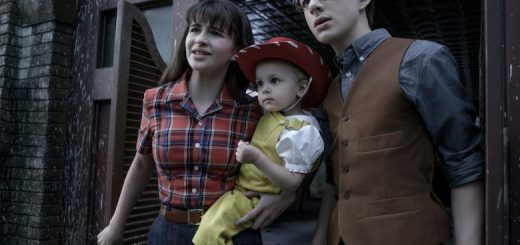Read “A Series of Unfortunate Events” before it hits Netflix

“The Bad Beginning,” “The Reptile Room,” and “The Wide Window” are the first three books in “A Series of Unfortunate Events. Image credit: Hypable
With the Netflix adaptation of “A Series of Unfortunate Events” by Lemony Snicket to be released this Friday, January 13, it’s worth taking a look at what made the original book series so great.
“A Series of Unfortunate Events” is an engrossing book series filled with mystery and thrill. The books revolve around three newly orphaned siblings, Violet, Klaus, and Sunny Baudelaire. When they are sent to live with their distant relative Count Olaf, a wicked man who plans to steal their family fortune, their lives take a turn for the worse…over and over again.
There are a total of 13 books in the series, and each has a new adventures to read about. The books are filled with humor, pain, and most importantly, readers are able to connect to each of the main characters.
Over the 13 books, we follow them as they keep switching guardians in hopes of getting away from Count Olaf. At times, the series can get redundant, with the Baudelaire siblings constantly running away. However, that only makes the books more captivating and adventurous. The hardships the Baudelaire siblings face with Count Olaf makes you feel sympathy towards them, which is one of the biggest motivations to continue reading–to find out if the siblings ever find a safe home.
The series does a good job of keeping the readers interested; each book leaves off on a cliffhanger that keeps readers wanting more. Another idea that keeps the readers interested is the author’s continuous warning to not read this book. It keeps readers wondering why the author is against them reading their own book. For example, Snicket warns his readers in the first book, “If you are interested in stories with happy endings, you would be better off reading some other book. In this book, not only is there no happy ending, there is no happy beginning and very few happy things in the middle.”
Throughout the series it can be hard to relate to the characters, especially because they are orphans. However, they do possess relatable personalities. For example, Violet, the oldest child, is the “caretaker” of the siblings who is also passionate about engineering. Klaus, the middle child, is a clever bookworm. Sunny, the youngest child, is the energetic baby who loves biting people. The bond the siblings share as they use their skills to help and protect each other from Count Olaf is heartwarming, and the very essence of how families should act.
“A Series of Unfortunate Events” attracts the 10-12 age group much like the “Spiderwick Chronicles.” However, “A Series of Unfortunate Events” is very different than the “Spiderwick Chronicles.” The Spiderwick books are fantasy, which completely contradicts the dark-humor, thrill, and mystery that can be found in the “Unfortunate Events” books.
If people enjoy reading books filled with dark-humor, then Snicket’s series is perfect for them. Snicket’s ironic voice makes the story enjoyable for older readers as well. For instance, Snicket humorously observes, “People aren’t either wicked or noble. They’re like chef’s salads, with good things and bad things chopped and mixed together in a vinaigrette of confusion and conflict.”
I hope the Netflix show displays the relationship between the siblings well, and also accurately displays their personalities. I also look forward to the seeing all of the different characters of Count Olaf. But no matter how the show turns out, fans can always turn to the books for the wisdom and humor the series offers.




Recent Comments